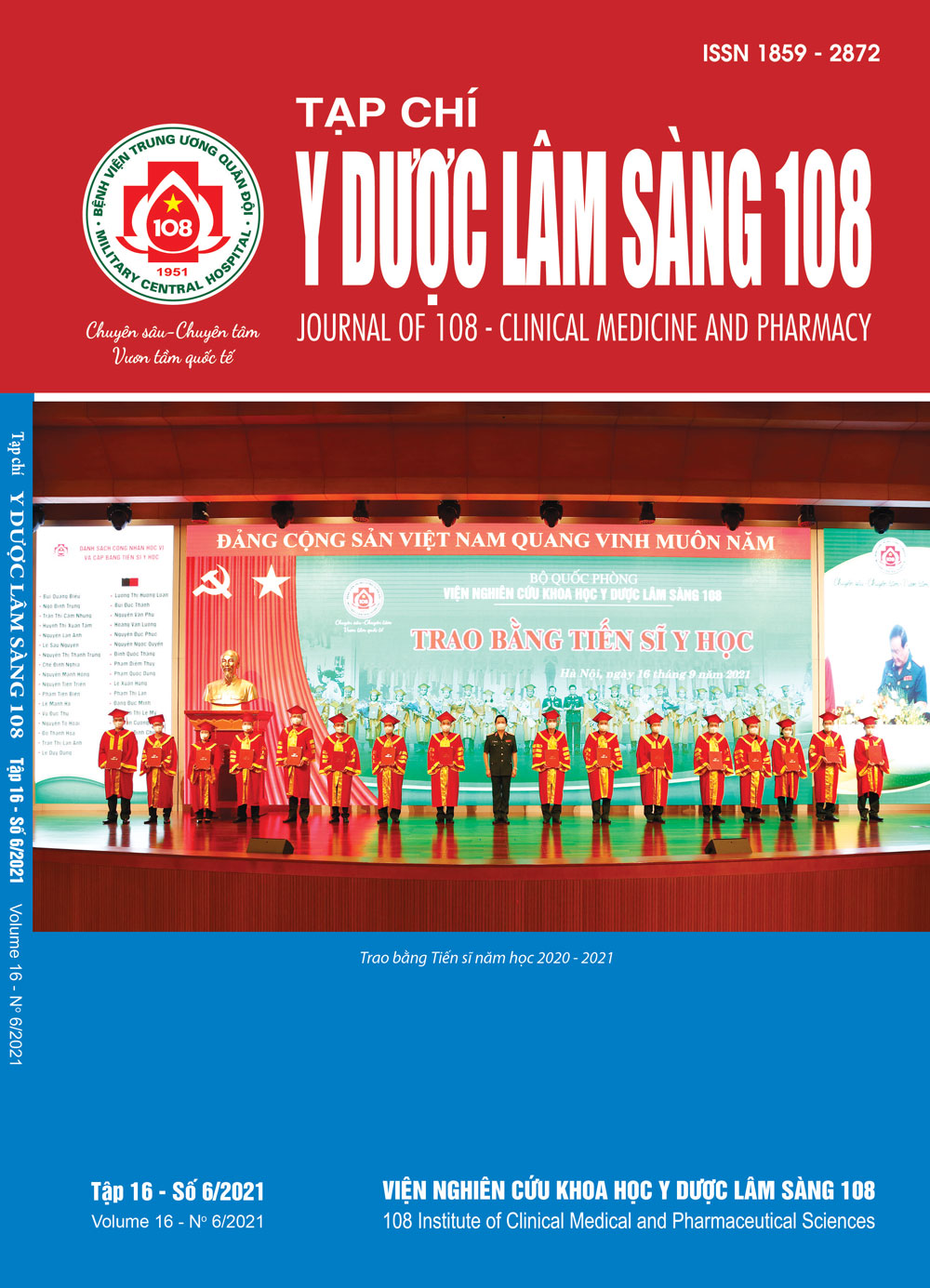The alteration of prostate prostate volume and post-void residual urine volume in men with benign prostatic hyperplasia after being treated by combination therapy with α1-blocker and 5α-reductase inhibitors
Main Article Content
Keywords
Abstract
Objective: To compare the prostate volume and post-void residual urine volume between 2 treatment methods in men with benign prostatic hyperplasia (BPH), α1‐blocker alone and a combination α1‐blocker plus 5α-RI. Subject and method: This was a multicentre, randomised, open‐label, parallel‐group study in 100 men with BPH. Patients were randomised to α1‐blocker plus 5 α-RI (50 patients) or α1‐blocker alone (50) and followed for 6 months. Result: The prostate volume of patients treated by avodart plus doxazosin fell off markedly after 3 months and 6 months (18.6% and 26.3%, p<0.05), while that of doxazosin alone group witnessed a slight increase. The post-void residual of urine of patient in both categories experienced the same trends over the period of 6 months. Particularly, there was a significant drop in that of combined therapy group, from 17.39 ± 21.79 ml to 24 ± 13.96ml and 4.68 ± 7.36ml after 3 months and 6 months, respectively (p<0.01). However, the 6 months brought a considerable elevation to the remaining category. Conclusion: The combined therapy with α1‐blocker plus 5α-RI resulted in rapid and sustained improvements in men with moderate to severe BPH symptoms at risk of progression with significantly greater symptom and a significantly reduced risk of BPH progression compared with α1‐blocker alone.
Article Details
References
2. Nguyễn Hoàng Đức, Đào Quang Oánh (2003) Mối tương quan giữa khối lượng mô tuyến tiền liệt cắt qua nội soi với sự cải thiện triệu chứng lâm sàng ở bệnh nhân bướu lành tuyến tiền liệt. Y học TP Hồ Chí Minh, tr. 56-61.
3. Lim KB (2017) Epidemiology of clinical benign prostatic hyperplasia. Asian J Urol 4(3): 148-151.
4. Braeckman J, Denis L (2017) Management of BPH then 2000 and now 2016 - From BPH to BPO. Asian J Urol 4(3): 138-147.
5. Herschorn S, Corcos J et al (2005) Canadian guidelines for the management of benign prostatic hyperplasia. Can J Urol 12: 2677-2683.
6. Kappor A (2012) Benign prostatic hyperplasia (BPH) management in the primary care setting. Can J Urol 19(1): 10-17.
7. Paul Toren, David Margel, Girish Kulkarni, Antonio Finelli, Alexandre Zlotta, and Neil Fleshner (2013) Effect of dutasteride on clinical progression of benign prostatic hyperplasia in asymptomatic men with enlarged prostate: A post hoc analysis of the REDUCE study. BMJ 346: 2109.
8. Kang D, Hu C, Fu Y, Wang D (2017) Combination of α-blocker and 5α-reductase inhibitor for treatment of benign prostatic hyperplasia. Clin Invest Med 40(5): 19.
9. Kaplan SA, McConnell JD, Roehrborn CG et al (2006) Combination therapy with doxazosin and finasteride for benign prostatic hyperplasia in patients with lower urinary tract symptoms and a baseline total prostate volume of 25ml or greater. J Urol 175: 217-220.
10. Gravas and Oelke, Gravas S, Oelke M (2010) Current status of 5alpha-reductase inhibitors in the management of lower urinary tract symptoms and BPH. World J Urol 28: 9-15.
11. McConnell JD, Roehrborn CG, Bautista OM et al (2003) The long-term effect of doxazosin, finasteride, and combination therapy on the clinical progression of benign prostatic hyperplasia. N Engl J Med 349: 2387-2398.
12. McConnell JD, Roehrborn CG, Oliver OM et al (2003) MTOPS Research Group. The long term effect of doxazosin, finasteride and combination therapy on the clinical progression of benign prostatic hyperplasia. N Engl J Med 349: 2385-2396.
13. Monda JM, Oesterling JE (1993) Medical treatment of benign prostatic hyperplasia: 5 alpha-reductase inhibitors and alpha-adrenergic antagonists. Mayo Clin Proc 68(7): 670-679.
 ISSN: 1859 - 2872
ISSN: 1859 - 2872
